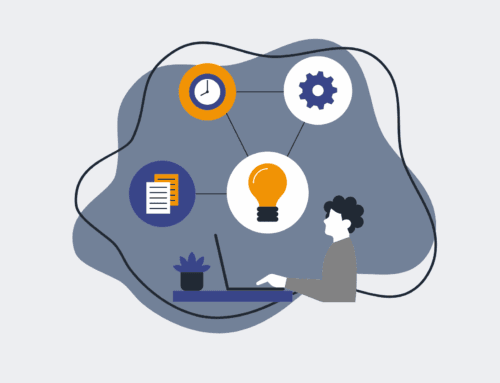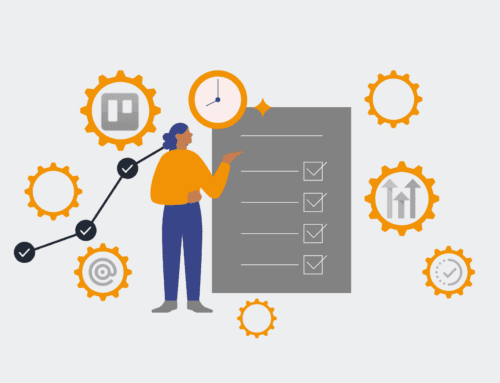Custom Offboarding Templates: Designing Your First Make.com Scenario
In the dynamic world of business, we often dedicate immense resources to optimizing the onboarding experience. Yet, the equally critical offboarding process frequently remains an afterthought, handled inconsistently or manually. This oversight can lead to a cascade of issues, from security vulnerabilities and compliance breaches to damaged employer brand and operational inefficiencies. At 4Spot Consulting, we understand that a well-architected offboarding process is not merely a formality but a strategic imperative that protects your assets, maintains your reputation, and ensures a seamless transition for all involved.
The Strategic Imperative of Structured Offboarding
Think beyond the exit interview. An employee’s departure initiates a complex web of tasks spanning multiple departments: IT needs to revoke access and retrieve equipment, HR must process final paychecks and benefits, and managers need to reassign tasks and ensure knowledge transfer. When these steps are handled ad-hoc, the risk of error escalates dramatically. Unrevoked access can pose significant data security threats, compliance failures can lead to legal penalties, and a poor final impression can turn a departing employee into a detractor, impacting future recruitment and brand perception. A structured, templated offboarding process mitigates these risks, ensures consistency, and provides a professional conclusion to an employment journey.
Leveraging Make.com for Intelligent Offboarding Automation
This is where Make.com truly shines. As a powerful, visual automation platform, Make.com allows businesses to orchestrate complex workflows across dozens of disparate systems. For offboarding, this means seamlessly connecting your HRIS (Human Resources Information System), IT provisioning tools, communication platforms (like Slack or email), project management software, and even accounting systems. Instead of relying on manual checklists and inter-departmental emails that often get lost or delayed, Make.com enables you to design a robust, custom offboarding template that automatically triggers and executes tasks with precision and speed. It moves beyond simple task lists to an integrated, intelligent workflow that adapts to unique scenarios.
Defining the Core Components of Your Offboarding Scenario
Designing your first Make.com offboarding scenario requires a strategic approach. It starts with identifying the trigger: typically, an employee’s status change in your HRIS, a form submission by a manager, or a direct entry into a project management tool. Once triggered, the scenario should branch into various paths based on conditional logic. For instance, a senior executive’s offboarding might include additional legal review steps and more stringent data transfer protocols compared to a temporary staff member.
Key components to consider include:
* **IT Access Revocation:** Automatically deactivating accounts, removing from groups, and initiating equipment return requests.
* **HR & Payroll:** Generating final pay stubs, sending COBRA information, updating benefits, and scheduling exit interviews.
* **Managerial Handover:** Creating tasks for knowledge transfer, updating CRM records, reassigning projects, and scheduling transition meetings.
* **Communications:** Sending internal notifications to relevant teams, drafting internal announcements, and managing external communication if necessary.
Designing Your First Scenario: A Strategic, Iterative Approach
Rather than diving straight into building, 4Spot Consulting advocates for a strategic planning phase. Begin by mapping your current offboarding process, identifying every stakeholder and every manual step. Where are the bottlenecks? Where are the error points? Once you have a clear picture, define your ideal future state. What should the offboarding experience look like for the employee, the manager, and the organization?
Your first Make.com scenario doesn’t need to automate every single task from day one. Start simple, focusing on the most time-consuming or error-prone aspects. Perhaps it’s just the IT access revocation and HR notification initially. From there, you can iteratively add more modules and complexity, refining your template as you gain insights. This iterative approach ensures that your automation is robust, adaptable, and truly serves your business needs. It’s about building a repeatable, customizable template that can be duplicated and adjusted for different roles or circumstances, saving countless hours and ensuring consistent execution.
Beyond Basic Automation: Infusing Intelligence
With Make.com’s flexibility, you’re not limited to merely automating tasks. You can integrate AI capabilities to enhance your offboarding templates. Imagine automatically summarizing exit interview feedback to identify recurring themes, or using natural language processing to categorize reasons for departure, providing valuable insights for retention strategies. This level of intelligent automation transforms offboarding from a reactive necessity into a proactive opportunity for continuous improvement and strategic planning. By connecting the dots between various data sources, Make.com empowers you to derive actionable intelligence that informs future HR policies and operational adjustments.
The 4Spot Consulting Advantage in Your Offboarding Strategy
Navigating the complexities of designing and implementing cross-functional automation scenarios can be daunting. This is precisely where 4Spot Consulting excels. Our strategic-first approach, built on frameworks like OpsMap™, ensures that your Make.com offboarding templates are not just technologically sound but deeply aligned with your business objectives. We don’t just build; we strategize, design, and implement systems that eliminate human error, reduce operational costs, and increase scalability, turning a typically fragmented process into a seamless, automated workflow that protects your business from end to end.
If you would like to read more, we recommend this article: A Step-by-Step Guide to Building an Automated Offboarding Workflow in Make.com









